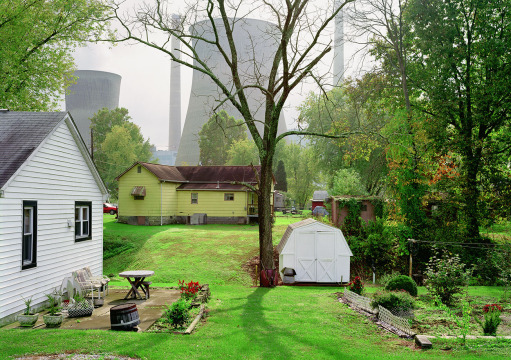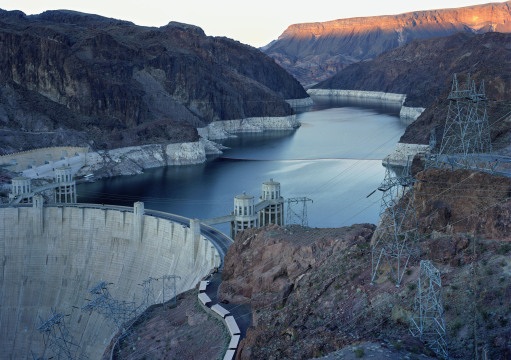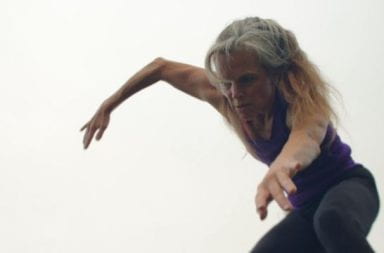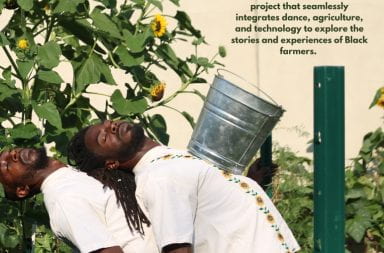
Nestled a mile and a half upstream from the Ohio River in Cheshire, Ohio, lies the Gavin Power Plant. The plant consumes over 25 thousand tons of coal a day, making it the largest coal fired power facility in Ohio. But to photographer Mitch Epstein, it’s also art.
Epstein and cellist and composer Erik Friedlander are set to collaborate in the Wexner Center for the Arts’ upcoming show, “American Power,” an audiovisual act centered on Epstein’s photo series that surveys how the American landscape is affected by various power sources.

A photo of the Gavin Coal Power Plant in Cheshire, Ohio, taken by Mitch Epstein in 2003. The photo will be shown in “American Power,” which takes place at the Wexner Center Thursday and Friday.
Credit: Courtesy of Sikkema Jenkins & Co., New York.
During 2003-08, Epstein traveled to 25 states across the U.S. taking pictures of power sources such as dams and nuclear, coal-fired and alternative-energy power plants, among others and their surrounding landscapes, he said.
Although the photos might evoke notions of the mass environmental impacts that man-made power sites can have, both Epstein and Friedlander noted that neither the images nor story have a specific message or intent.
“It’s easy to make a picture that conveys, ‘This is troubling,’ or ‘We should be doing this a different way,’ but that isn’t the purpose of these pictures,” Epstein said. “It’s to illuminate what I see, but also to allow for beauty to be an element … because these landscapes can still be beautiful, even if they’ve been harnessed to satisfy certain needs that we’ve extracted from it.”
The show includes about 100 images accompanied by a live, partly improvised cello part played by Friedlander, video segments and Epstein’s narrative of how his photos came to be, chronicling his methods, challenges and overall journey.
The performance not only fixates on the ideas of electrical power, but political power as well, said Jennifer Wray, marketing and media assistant at the Wexner Center for the Arts.
“In some ways, it’s reminding us to be more cognizant of very simple things, like being able to power on a phone or to have heat,” Wray said. “And also of the people in positions of government and corporate power who make day-to-day decisions that guide our lives — for better and for worse.”

Epstein first began “American Power” after being commissioned in 2003 to Cheshire, a small town along the Ohio River that lies in the shadow of a large, coal-fired power plant. He said the experience of taking photos in Cheshire lingered with him, compelling him to further examine the relationship between American energy reserves, culture and the environment.
“I didn’t set out to do this project as a political work per say, but there were certain relations to the political times,” Epstein said. “In 2008, the era of George W. Bush and Dick Cheney was coming to an end, and both of them had a lot to do with the control of our energy policies.”

A photo of the Hoover Dam and Lake Mead on the Nevada/Arizona border, taken by Mitch Epstein in 2007. The photo will be shown in “American Power,” which takes place at the Wexner Center Thursday and Friday.
Credit: Courtesy of Sikkema Jenkins & Co., New York.
Getting the photos wasn’t always easy for Epstein, he said, noting that he had particular trouble getting access to nuclear power plants and in small towns, as he stuck out with his antiquated, large-format camera.
“It was not uncommon for me to be called into question about what I was doing, or to be told I wasn’t allowed to take pictures on public property, although it was within my constitutional rights,” Epstein said. “But I think that the anxiety I was carrying with me … propelled me forward in a way that made me even more uncompromising to my own artistic will.”
The photos were first published in a traditional book format in 2009, and in 2011, Epstein received the Prix Pictet award, a global prize given annually to a single photographer for work revolving around issues of sustainability. He said by the time he was asked to publicly accept the award, he had already shown his images on multiple accounts and wanted to do something different. He contacted Friedlander and gave him the creative freedom to “respond to the photos.”
“The music that he composed in response to the work in some way took the whole series to another place,” Epstein said. “All of a sudden it was this new entity.”
Friedlander said he was instantly inspired by Epstein’s photo series. He aims for the music to give the audience an atmosphere in which to view the images and to blend in well enough that it comes across as another element of the storytelling, although slightly more abstract. He’s an improviser, so the sounds change with each run through.
Epstein and Friedlander released an album on vinyl titled “American Power” in 2012 that included six original cello compositions by Epstein and a 24 x 36 in. poster of Epstein’s photographs. They have since worked with theater director Annie-B Parson to enhance the performance aspects of the show, Friedlander said.
“American Power” will be at the Wexner Center for the Arts at 8 p.m. on Friday and Saturday. Tickets are $10 for students, $16 for members of the Wexner Center and $18 for the general public. Epstein has photographs in multiple major museum collections, such as the Museum of Modern Art, the Metropolitan Museum of Art, The J. Paul Getty Museum, the San Francisco Museum of Modern Art and the Tate Modern in London, and Friedlander has played cello since he was 8 years old, released more than 20 CDs and scored music for films and documentaries.
“The show lays out how we are sometimes in uncomfortable proximity with power … without being too dogmatic about what the solutions are, because that’s not really our business,” Friedlander said. “It just tries to ask the questions in a thought-provoking, artistic way.”



